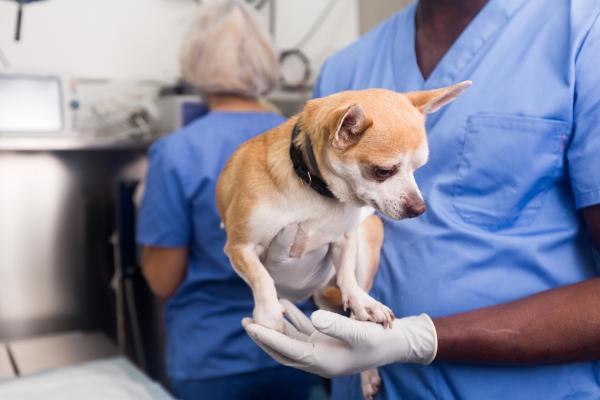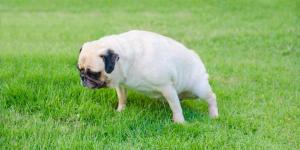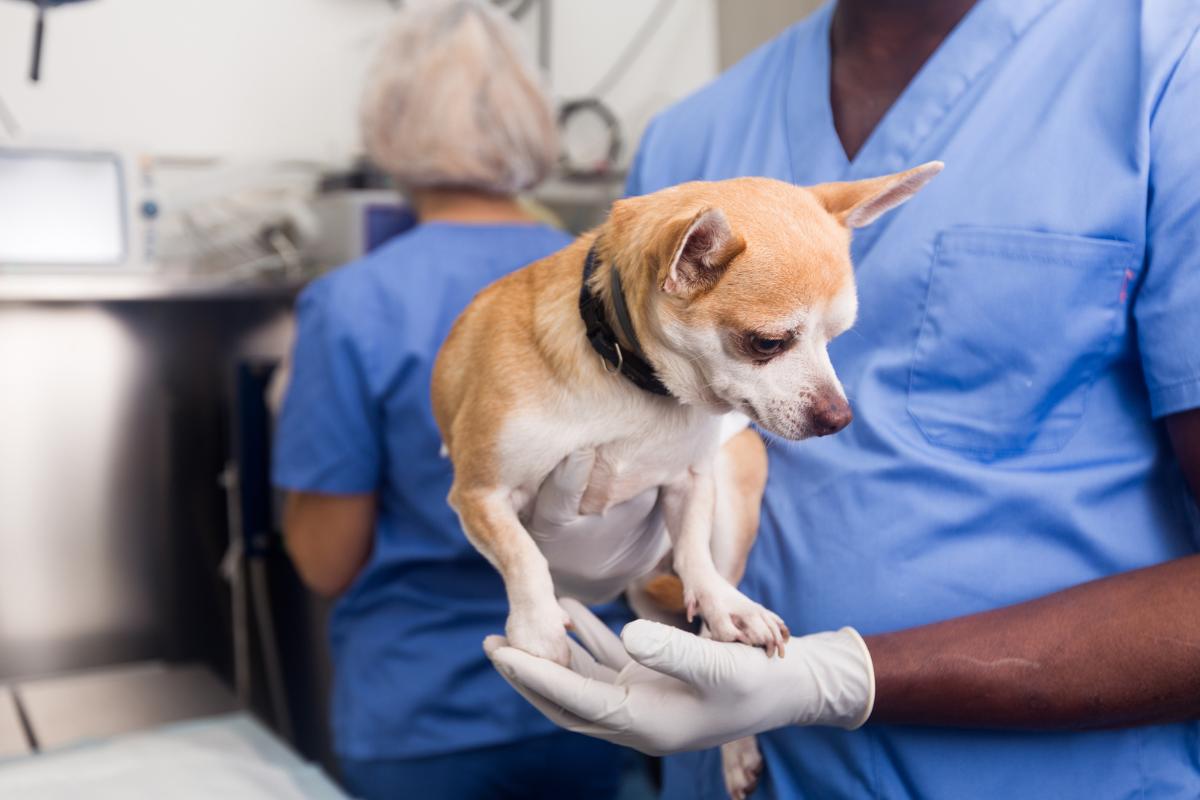Signs of Infection After Neutering a Dog



See files for Dogs
Despite being a safe procedure, an infection is possible after a dog is neutered. Although the dog will be under general anesthetic during the surgical operation, they will be back to their happy selves within a short period of recovery time. This is good for the mental wellbeing of the dog, but it provides complications when it comes to protecting their incision from infection or even reopening. For this reason, we need to protect the incision itself and prevent pathogens from entering the wound.
Infections of the wound site or internal infections after neutering are very uncommon, especially with the right care. Regardless, it is imperative guardians be observant for any complications after a dog is neutered. This is why AnimalWised provides the signs of infection after neutering a dog. If we see any of these signs, we must contact a veterinarian immediately.
The neutering procedure in dogs
Neutering is the removal of a dog's sexual reproductive organs. Sterilization prevents the dog from being able to reproduce, but this can be temporary. In contrast, neutering is usually a form of permanent sterilization as it cannot be reversed. The nature of the neutering procedure depends on the sex of the dog:
- Spaying: also known as an ovariohysterectomy, spaying is the removal of the ovaries and uterus of female dogs. It requires an incision on their abdomen where the uterus can be removed safely and effectively.
- Castration: this is neutering of a male dog which requires removal of the testes. The incision site for males is on the scrotum.
There are variations of these procedures. It is possible a female dog will have their uterus removed, but not their ovaries. Male dogs may be provided with a vasectomy or a tubal ligation. These procedures are not common. Although the dog may be sterilized, keeping some of their sex organs can provide serious problems. These problems can be understood by looking at the benefits of neutering your dog.
Many countries legally require dogs and cats to be neutered before adoption. The reason for this is largely due to the overpopulation of these companion animals. There are not enough guardians to care for all of the animals and need. This puts a strain on the recue system which cannot care for all the animals and results in needless euthanasia. It also increases feral animal populations which can be devastating for local wildlife.
The benefits are also important to the animals themselves. Removing the sex organs means they will produce less sex hormones. These are the hormones which cause female dogs to go into heat and male dogs to chase females when they recognize they are in heat. The dog should be neutered early, before they have the chance to produce high levels of sex hormone.
If we do not neuter dogs, their behaviors can be very difficult to handle. The dogs will become desperate to mate, even getting lost in search for a potential partner. Their hormones can influence behaviors such as aggression, especially if we try to prevent them mating. The feelings of frustration and the increased hormonal activity can be detrimental to the wellbeing of the dog and the guardian.
Finally, neutering also helps improve the physical wellbeing of the dog. Sexually intact dogs are more likely to develop various cancers such as uterine, breast or prostate cancer. Neutered dogs tend to live longer, although it is important to note this is only one form of preventive care in dogs.
Causes of infection after neutering a dog
The first thing to note is that complications after neutering a dog are rare. If the veterinarian is qualified and reputable, the risk is low. It is a common procedure which is considered routine. The veterinarian will also provide detailed information on what to do to prevent complications, something we explain in the sections below.
There are instances when the dog might develop an infection which can be internal or external. The direct cause of the infection will be bacteria entering the tissues of the dog. Bacteria in the environment can rub against the dog's abdomen or scrotum and result in the incision becoming infected.
Another common route for bacteria to enter the wound site is by the dog themselves. The incision can cause irritation and the dog will lick their private area to try to relieve the annoying sensation. In doing so, they may have bacteria in their mouth which can be passed on to the incision. Additionally, saliva on the wound can encourage environmental bacteria and become a breeding ground.
Internal infections after neutering a dog are less common. They may occur due to negligence on the veterinarian's part. If the procedure does not use properly sterilized equipment or if bacteria is otherwise introduced during the procedure, the infection can grow underneath the incision.
The dog can also cause or influence an internal infection. Although they will be groggy and tired after the initial procedure, many dogs are back to their normal selves 24 hours after being neutered. If they are energetic and playful, they can knock the incision and cause internal damage. This can lead to infection or even an internal rupture.

Signs of infection after neutering a dog
Since the origin of the infection can be internal or external, the clinical signs can differ. For an infected neuter incision in a dog, the stitched incision site will show signs of infection. Since it is possible an infection can develop beneath the incision site, we need to be observant for other symptoms. In these cases, the incision may appear fine, but there are other signs of neutering infection which we need to consider.
Whether the incision itself is infected or there in an internal infection, the following are possible signs of infection after neutering a dog:
- Inflammation: since spaying and neutering requires opening the tissue of the dog, some mild swelling is common after the procedure. This can last up to 2 weeks in the female or male. Abnormal swelling after neutering occurs when the swelling doesn't go down after this time or increases at any stage. This swelling is due to the dog's immune defense trying to fight the infection.
- Redness: as with swelling, some redness after neutering a dog is considered normal. This should also go down after several days. If the redness persists or becomes greater, this is a likely sign of infection. It is more common for the incision itself to be red due to infection, but an internal infection can also cause this problem.
- Bleeding: this may not necessarily be a sign of infection after neutering a dog, but bleeding can be a problem which leads to infection. A small amount of bleeding may occur in the days immediately following surgery, but this should disappear. For female dogs, a dog bleeding from her vulva after spaying can occur, but it should be minimal. We will most likely see spotting. A lot of blood can imply the incision stitches have opened and puts the dog at a higher risk of secondary bacterial infection. Internal bleeding can cause swelling and may eventually leach out of the incision.
- Discharge: when we see discharge after neutering, it usually means an infection has already taken place. A small amount of drainage is normal at the beginning, but purulent discharge means the immune system is trying to fight an infection. If this infection is internal, it can cause the abdomen or scrotum to swell. This presents a serious risk to the health of the dog.
- Bad odor: if the infection has become purulent, it is common for the incision site to emit a bad smell. This is only when the infection has sufficiently advanced.
- Excessive licking: after spaying or castration, it is common for the dog to want to lick their wound site. We will need to prevent this as best we can. Even with prevention methods in place, it is possible a dog will still keep trying to lick their wound. If it persists, this may be due to the irritation caused by an infection.
- Pain: dogs are very good at hiding their pain. Since the neutering procedures are routine, they should not cause significant pain after surgery. The veterinarian will likely prescribe analgesics to mitigate any discomfort, but these will only be for around 24 hours. After this time, any significant signs of pain in the dog may intimate there is an infection.
Most of the warnings signs of a dog after neutering are related to the infection. These include the aforementioned swelling, redness, bleeding and discharge. However, internal infections may not present these more obvious symptoms. In these cases, the dog may present more generalized clinical signs. They include the following:
- Persistent lethargy
- Loss of appetite
- Weight loss
- Fever
- Vomiting
- Diarrhea
In these cases, the infection may have spread and affected their entire nervous system. It is important to note that a dog limping after neutering is not common. If it is due to an infection, other signs are likely to develop first.
Learn more about why a dog may be bleeding after spaying in our related article.
Treatment of infection after neutering a dog
If we see any of the above signs of infection in a neutered dog, we need to take the animal to a veterinarian. They will be able to assess the dog to confirm the infection. Since the infection can be external, internal or both, they may need to administer some imaging tests such as an ultrasound or an x-ray. After these tests, they will be able to determine the spread of the infection.
Bacterial infections can be treated with antibiotics. It is up to your veterinarian to determine which antibiotics are required for your dog. Never give human medications to your dog or use antibiotics from a previous ailment. Once the antibiotic treatment has been determined, ensure you finish the complete course even if signs of infection seem to have subsided.
If the dog's stitches are infected, the veterinarian may need to remove the sutures. They can then clean the wound, drain it and suture it again once it is safe to do so. In some cases, further surgical intervention may be required. This occurs when the infection has been allowed to spread and has damaged internal tissues.

How to prevent infections after neutering a dog
As stated above, your veterinarian should detail what you need to do after the spaying procedure. In addition to analgesics, the vet will also likely prescribe preventive antibiotics to reduce the risk of infection after neutering. Metronidazole for dogs is a common antibiotic prescribed for this purpose.
One of our main responsibilities as guardians is to prevent the neuter incision becoming open. This means we need to restrict our dog's access to the wound site. One of the most common ways to do this is with an E-collar for dogs. These are cones which are attached around the neck and prevent the dog from accessing the wound site.
Another option is to use dog surgery recovery suits. These are body suits which cover the incision site. The dog may still try to lick the area, but the incision itself should be protected from bacteria. These are especially helpful for female dogs after spaying. There are also harder to remove than E-collars.
We will also need to ensure the dog has a relaxed environment and we need to refrain from making the dog excited. This means we need to provide a comfortable den and limit exercise until the neutering incision has been fully healed. We will also need to ensure high hygiene standards in the area where the dog is staying. This is so we can prevent environmental bacteria entering the wound site.
If you have any more questions, you may want to read our article on what to expect after your dog is neutered.

This article is purely informative. AnimalWised does not have the authority to prescribe any veterinary treatment or create a diagnosis. We invite you to take your pet to the veterinarian if they are suffering from any condition or pain.
If you want to read similar articles to Signs of Infection After Neutering a Dog, we recommend you visit our Reproductive system diseases category.







